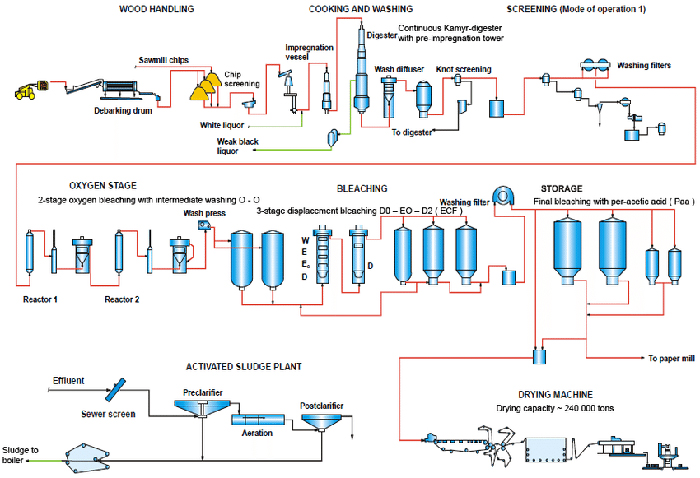Osmotic softener is applied to chemical mechanical pulp
Osmotic softener is applied to chemical mechanical pulp to reduce energy consumption and emissions
Unlike chemical pulping, chemical mechanical pulp chemical treatment uses a low concentration of liquid, and the amount is controlled to dissolve only certain extracts and short-chain hemicellulose, and almost no lignin. Therefore, although increasing the temperature of the liquid can accelerate the penetration, the concentration of the liquid is low, and the immersion time is short, so the penetration of the liquid is still relatively slow, so that the fibers inside the wood chip are not fully swelled and softened, resulting in a decrease in the quality of the refining and Increased energy consumption. Especially for raw materials with tighter structure, the uniformity of penetration of the liquid is more difficult to guarantee.
The function and characteristics of chemical mechanical pulp penetration softener
The chemical mechanical pulp permeation softener is generally composed of a variety of anionic surfactants and nonionic surfactants, and has various surface active ingredients, which can reduce the surface tension of the liquid, accelerate the impregnation of the liquid, and accelerate the softening. Loose raw materials. It can also produce a synergistic effect with the liquid medicine to achieve the purpose of rapidly swelling, softening and loosening the fiber, and can effectively protect the carbohydrate from being subjected to the peeling reaction, increase the pulp yield, increase the pulp strength, reduce the sieve residue rate and grind. Plasma energy consumption. Its physical and chemical indicators are as follows:

Appearance: slightly yellow standing thick liquid.
Ionicity: anion.
PH value: 7-10.
Effective substance content: ≥ 85% 25.
Density: 0.951-1.10g/cm3.
Solubility: soluble in water and lye.
Safety: Non-toxic, easily degradable, non-hazardous.
Characteristics: alkali resistance, hard water resistance, high temperature resistance, strong oxidant resistance, strong penetration, moisturizing, emulsifying, dispersing, degreasing, washing, preventing scaling and other functions.
The use of chemical mechanical pulp penetration softeners has achieved significant benefits and economic benefits:
- Pulp yield can be increased by 2% 25-3%25.
- Pulp whiteness can be increased by 2% 25-3% 25ISO.
- The tensile index and the tear index were improved to different extents, indicating that the pulp strength was improved.
- Can reduce the concentration of the chemical solution, saving chemical use 2% 25-4% 25.
- Due to fiber swelling, softening completely, can reduce the energy consumption of refining 5% 25-10%25.

